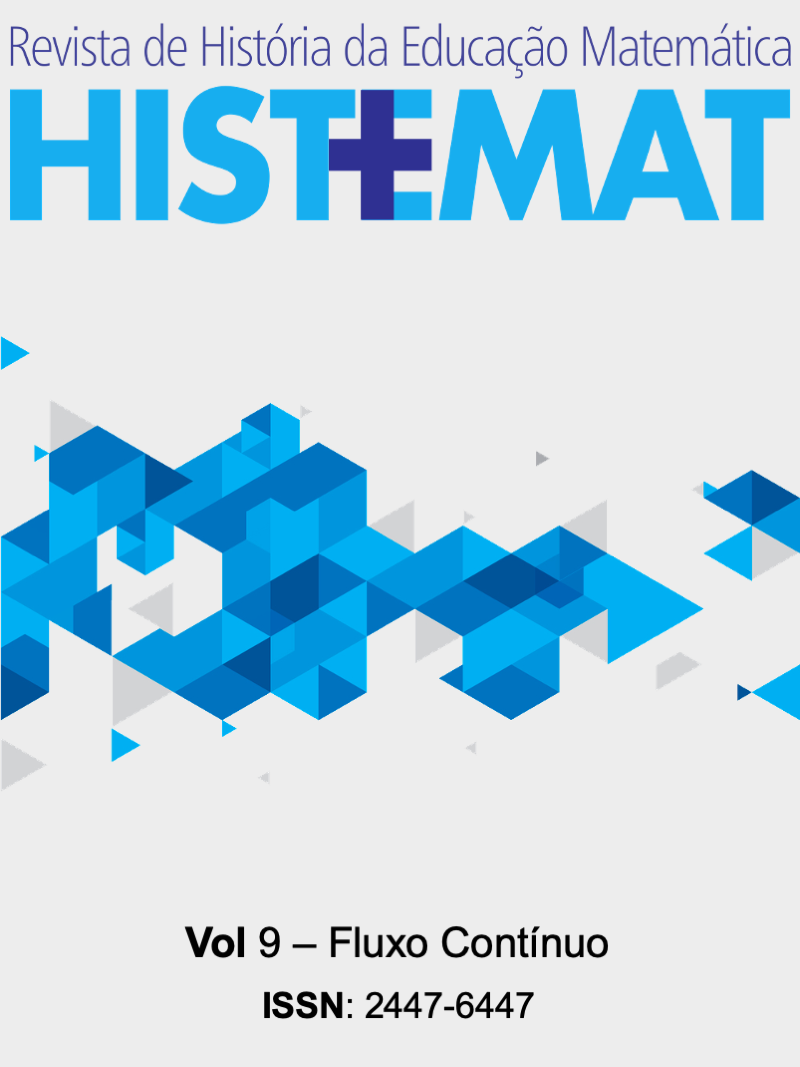FROM DESCRIPTIVE HISTORY TO INTERPRETATION AND EXPLANATION – a wave model for the development of mathematics education in Denmark
Palavras-chave:
Dig where you stand, Wave model, Danish historyResumo
How should we write a history of mathematics education? To answer this question, we have to consider why we should want to study this history. For many mathematics teachers – as in the case of the author- it is simply necessary to explore your own profession to improve your teaching. But in the end it would be useful if some people took a more scientific approach and looked for mainlines in the development, tendencies, patterns or even explanations. To do so we have to consider the initial local history of mathematics education in a wider context both in a nationwide and in an international comparison as well in comparison with other school subjects and the history of pedagogy in general. In this paper we explore the possibility to make a wave model of the development of mathematics education in Denmark in the past two centuries, illustrating periodic changes between times with emphasis on understanding and times with emphasis on drill and skills. To which extent can a model like this be explained?
Downloads
Referências
BRIDEC (1991). Science I-II, Mechanics & Mathematics for Brigades. Gaborone, Botswana: Government Printer.
Carlsen, Olaf (1955). Pestalozzi og Danmark I. Heinrich Pestalozzi og Frederik Münter. Aarhus University Press.
Ejersbo, Lisser Rye (2009). Hvordan kan vi forstå den nuværende matematikundervisning i Danmark på baggrund af undervisningen i det 20 århundrede? Forum for matematikkens didaktik 13. årg. nr. 1, 9-11.
Friis-Petersen, Fr. et al (1918-1959). Den ny regnebog I-VIII & Købstadsskolens ny regnebog & Landsbyskolens ny regnebog & Mellemskolens ny regnebog & Realklassens ny regnebog. Copenhagen: Julius Gjellerups Forlag.
Gehl, Ernst(1921). Om regning. Vor ungdom 1921, 204-207.
Grue-Sørensen, K. (1972). Opdragelsens historie, vol. 3. Copenhagen: Gyldendal.
Hansen, H.C. (1981). Forsøgsmøllen i Askov, Dansk Udsyns Forlag.
Hansen, H.C. (1985). Poul la Cour, grundtvigianer, opfinder og folkeoplyser. Doctoral thesis, Askov Højskoles Forlag.
Hansen, H.C. (2002). Fra forstandens slibesten til borgerens værktøj. Matematik og regning i folkets skole 1737-1958. Papers from DCN No. 16. Aalborg: Centre for Educational Development in University Science.
Hansen, H.C. (2004). Skolematematikkens formative årtier 1903-1937. Skriftserie for Nasjonalt Senter for Matematikk i Opplæringen No 2 (Popularisering av matematikk), 69-80.
Hansen, Hans Christian et al (2008). Matematikundervisningen i Danmark i 1900-tallet, vol. I-II. University Press of Southern Denmark 2008.
Jensen, Hans Nygaard (1996). Fagets formål, læseplaner og evaluering. Unge pædagoger no. 5, sept. 1996.
la Cour, Poul (1881). Historisk Mathematik. Kolding, Denmark.
Lütken, Johanne (1905). Regneundervisning. Vor ungdom 1905, 449-451.
Nielsen, Hans Christian (1815). Materialier til Underviisning i Hoved-Regning. Hefte 1-3. Copenhagen: Soldin.
Nørby, Axel (1929): Regneundervisning. Vor Ungdom 1929, 213-215.
Schacht, A.R. (1971). En praktisk mellemskole. Copenhagen: Gad.
Schneekloth, Hans (1841). Opgaver til Hovedregning. Copenhagen: Gyldendal.
Sfard, Anna (2003). Balancing the unbalanceable: the NCTM standards in light of theories of learning mathematics. A research companion to principles and standards for school mathematics. Reston: NCTM, 353-392.
Downloads
Publicado
Métricas
Visualizações do artigo: 53 PDF downloads: 61































